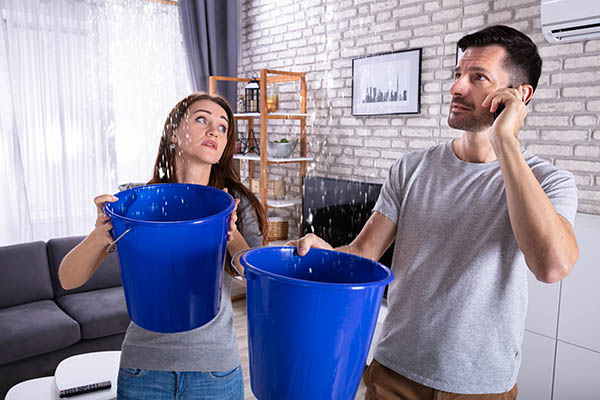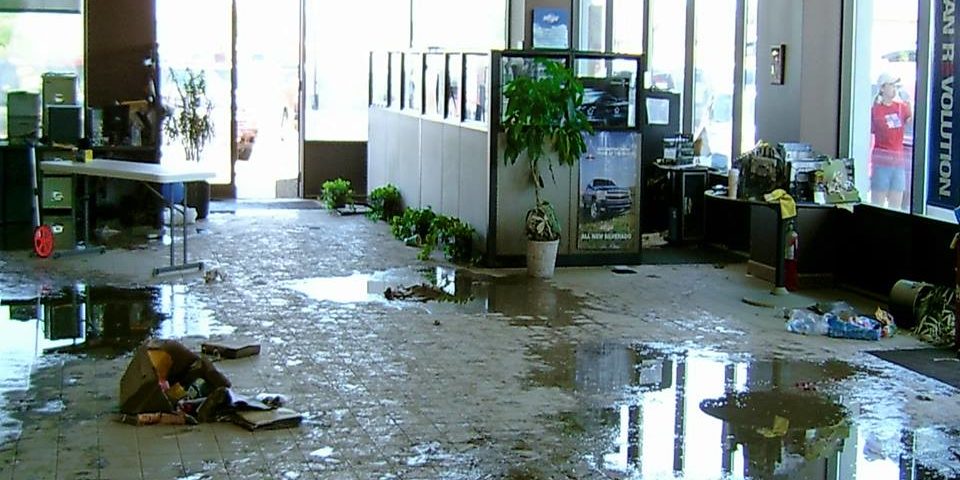Best practices in water damage restoration after a leak
Wiki Article
All Concerning Water Damages Repair: Trick Facts and Benefits You Should Know
Water damage remediation is a vital process that every property owner must comprehend. It entails reviewing the type of damage, whether tidy, grey, or black water, and carrying out an organized remediation strategy. Recognizing the signs of water damages early can considerably influence the performance of the repair. Comprehending the actions involved and the importance of timely activity can avoid additional problems. What elements should property owners take into consideration when choosing in between expert services and do it yourself methods?Understanding Water Damage: Types and Triggers
What variables add to water damage, and how can they be classified? Water damage can be categorized into 3 main categories: clean water, grey water, and black water. Clean water stems from resources like broken pipelines or rainwater, posing minimal wellness dangers. Gray water, which might originate from devices like dishwashing machines or washing equipments, contains contaminants that call for cautious handling. Black water, stemming from sewer or flooding, positions serious carcinogen and demands prompt attention.The reasons for water damage vary. Typical elements consist of plumbing failures, roof covering leaks, all-natural catastrophes, and poor water drainage systems. Furthermore, human errors, such as leaving taps running or falling short to maintain devices, can exacerbate the trouble. Comprehending these kinds and causes is essential for reliable avoidance and remediation techniques, ensuring that property owners can take proactive steps to secure their homes versus the destructive effects of water damage.
Indications of Water Damages: How to Determine Concerns Early
Exactly how can one identify the early signs of water damages before it intensifies right into a more serious issue? Determining these concerns quickly can conserve home owners from extensive repair services. Usual indicators include noticeable water spots on wall surfaces or ceilings, which often look like brownish or yellow-colored spots. Another indication is gurgling or peeling off paint and wallpaper, recommending dampness beneath the surface area. Stuffy smells can additionally indicate hidden mold growth, a direct outcome of long term dampness. Furthermore, bending or buckling of floors may indicate excess moisture in the underlying structures. Property owners ought to on a regular basis inspect areas susceptible to water exposure, such as cellars, cooking areas, and shower rooms, for any type of signs of leakage or dampness. An abrupt rise in utility costs might hint at unseen leakages. By recognizing these very early indicators, people can take positive measures to attend to water damage before it aggravates.The Water Damages Repair Process: Step-by-Step

Next off, the drying process starts, utilizing air moving companies and dehumidifiers to eliminate moisture from walls, floorings, and individual items. After the area is completely dried, cleaning and sanitization happen to remove odors and contaminants.
Repair work and restoration job is carried out, which might include replacing damaged products, repainting, or refinishing surfaces. Throughout the procedure, paperwork is kept for insurance functions, making sure that all actions taken are videotaped. Each step is vital to recover the property and guarantee a risk-free living setting for occupants
Value of Timely Restoration: Why Acting Rapid Matters
Prompt repair adhering to water damage is necessary, as delays can cause rising issues such as mold growth and architectural degeneration. Water can quickly seep right into porous products, developing an optimal environment for mold and mildew spores to thrive. Within 24-48 hours, mold and mildew can begin to establish, positioning health and wellness risks and more complicating repair efforts.
In addition, long term exposure to moisture can deteriorate the structural stability of structures, resulting in expensive repair work and prospective security threats. Performing quick not only minimizes damage however additionally reduces the overall expense of repair. Insurance companies usually prefer timely action, which can facilitate smoother insurance claims procedures and quicker financial recovery for homeowner.
Inevitably, prioritizing prompt repair preserves building value, boosts security, and promotes a much healthier living environment. For these factors, quick action is crucial in the consequences of water damages, underscoring the significance of attending to issues as soon as they arise.
Specialist vs. DIY Repair: Disadvantages and pros
When considering water damage repair, homeowners often evaluate the alternatives of expert solutions against do it yourself approaches. Expense factors to consider play a significant duty, as expert restoration can be more costly yet might supply exceptional proficiency and specific equipment. Each alternative has its disadvantages visit the website and pros, influencing both the effectiveness and effectiveness of the remediation procedure.Expense Factors to consider
While homeowners might consider both expert services and do it yourself approaches for water damage restoration, each choice provides unique monetary implications and benefits. Specialist restoration services frequently include greater in advance expenses because of proficiency, labor, and tools. They can expedite the reconstruction procedure, potentially lessening more damages and connected costs. On the various other hand, do it yourself remediation could appear more budget-friendly initially, as it usually includes reduced straight costs. Yet, property owners ought to factor in the possibility for errors, which can cause much more substantial damage and greater lasting expenses. Inevitably, the selection between expert and do it yourself remediation rests on the homeowner's budget, the seriousness of the damages, and their determination to invest time and effort into the restoration procedure.Expertise and Tools
A notable distinction between expert and DIY water damages restoration lies in the expertise and tools available for each and every method. Specialists have specialized training and experience, enabling them to examine damage properly and execute efficient remediation strategies. They utilize innovative equipment, such as industrial-grade dehumidifiers and moisture detection tools, which can substantially accelerate the drying process and stop further issues like mold development. On the other hand, DIY reconstruction typically counts on standard house devices and methods, which may be much less effective and can lead to incomplete fixings. While do it yourself can conserve cash, it also brings dangers, consisting of prospective wellness threats and considerable damages if not carried out properly. Eventually, picking in between professional services and DIY approaches relies on the extent of the damages and the house owner's abilities.Advanced Techniques in Water Damages Reconstruction
Water damage remediation has commonly depended on basic methods, advanced methods are currently transforming the sector. Technologies such as thermal imaging modern technology permit restoration specialists to discover covert moisture behind wall surfaces and under floorings, making sure complete drying out procedures. Furthermore, using high-capacity dehumidifiers accelerates wetness elimination, significantly lowering the danger of mold development.One more development is the execution of antimicrobial treatments, which prevent mold and mildew and bacteria development, guarding the health of owners. Moreover, advanced drying out equipment, consisting of air movers and specialized drying mats, improves air flow and facilitates quicker evaporation of dampness.
Furthermore, real-time tracking systems now offer continual assessments of wetness degrees, enhancing and making it possible for timely interventions restoration initiatives. These advancements not only boost the efficiency of water damages repair yet also contribute to much better results for homes, decreasing long-term damages and costs linked with water-related occurrences.
Stopping Future Water Damage: Tips for Homeowners
To stop future water damages, house owners must embrace proactive steps that attend to potential vulnerabilities in their homes. Routine maintenance of downspouts, rain gutters, and roofing systems is essential; guaranteeing these are free from particles can stop water buildup. Home owners must also check plumbing systems for leaks and change damaged pipes discover this info here quickly. Setting up sump pumps in basements can prevent flooding throughout hefty rainfalls, while using water alarm systems can supply early detection of leaks.Additionally, securing doors and windows aids protect against rainfall invasion. Landscaping ought to route water far from the foundation, employing appropriate grading and water drainage solutions. Property owners may additionally consider waterproofing basements and creep rooms to more alleviate dangers. Ultimately, keeping an upgraded supply of home items can aid in insurance cases need to damage happen. By implementing these methods, homeowners can meaningfully decrease the chance of water damages and safeguard Find Out More their financial investments.
Regularly Asked Questions
Just How Much Does Water Damage Restoration Commonly Price?
Water damages remediation normally costs in between $1,000 and $5,000, relying on the level of the damage, the sort of products influenced, and the place. Complex instances may exceed this variety significantly, calling for specialist assessment.Will My Insurance Coverage Cover Water Damage Remediation Costs?
Insurance policy protection for water damage repair differs by plan and conditions. Generally, home owners' insurance coverage might cover problems from sudden cases, yet exclusions might apply. It is suggested to review the policy details or seek advice from an insurance coverage representative.How much time Does the Remediation Refine Generally Take?

What Should I Do Quickly After Discovering Water Damage?
Upon discovering water damages, one must quickly turn off the water source, get rid of useful things from the affected location, and warranty appropriate air flow. Looking for specialist aid is vital for efficient damage control and remediation.Exist Specific Materials That Are Immune to Water Damage?
Certain materials, such as treated wood, concrete, and fiberglass, exhibit higher resistance to water damage. Furthermore, water resistant coverings and artificial materials boost longevity, offering effective defense versus dampness and possible wear and tear gradually.Water damages can be identified right into 3 major categories: clean water, grey water, and black water. When considering water damage repair, home owners often weigh the options of specialist services against Do it yourself techniques. While property owners might think about both specialist solutions and DIY strategies for water damages repair, each choice provides unique financial implications and advantages. Water damages restoration usually costs between $1,000 and $5,000, depending on the level of the damages, the type of products impacted, and the area. Upon finding water damage, one should immediately transform off the water source, eliminate important products from the affected area, and guarantee proper air flow.
Report this wiki page